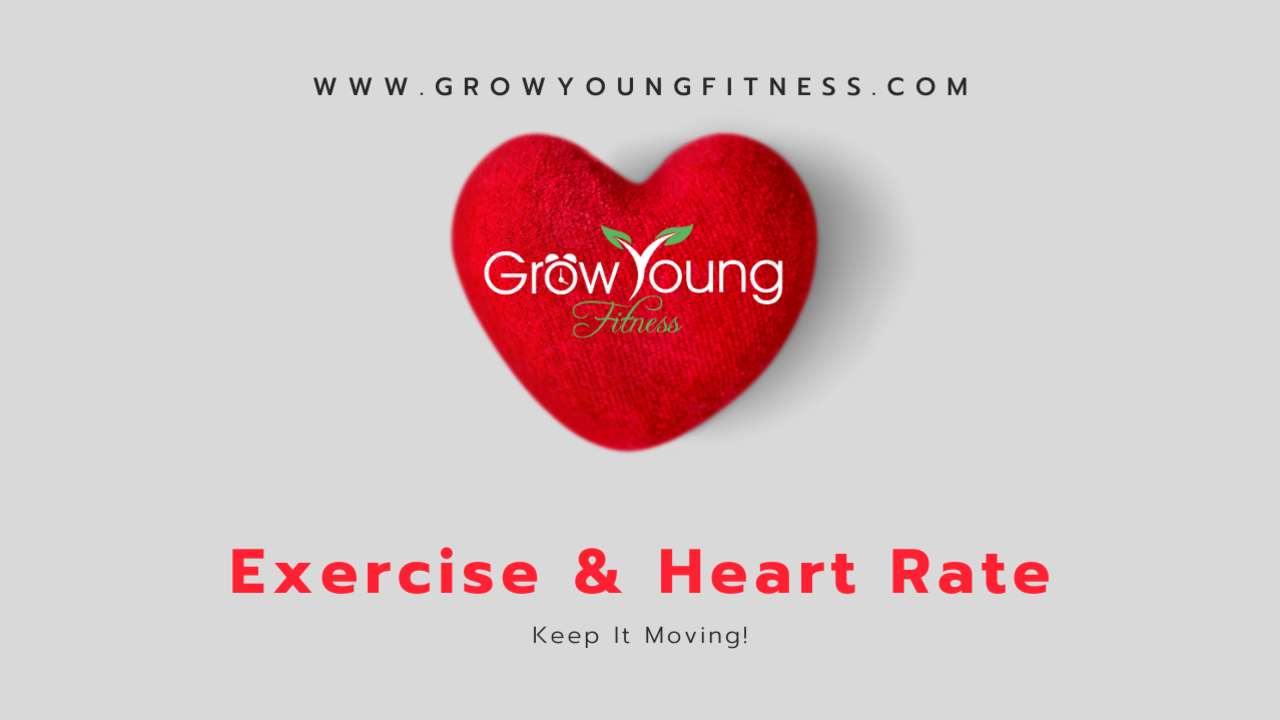Exercise & Heart Rate
Oct 26, 2020
Exercise & Your Heart Rate
The idea of using your heart rate as a method to measure how hard you are working out has been around for a long time. For example, most cardio equipment you see has a heart rate monitor. We can also measure our heart rate using wearable technology such as a Fitbit or similar device.
Determining your maximum heart rate began with a simple mathematical formula— subtract your age from the number 220. For example, if you are 60, your maximal heart rate was said to be around 160 (220-60). And, from this number, optimal training zones were created. The American Heart Association still promotes this method as a general indicator for training zones for seniors suggesting seniors can train somewhere between 50% to 85% of a person’s maximum heart rate.
Using this formula, target training zones for cardiovascular exercises for seniors would be:
- 55 years of age 83-140 beats per minute
- 60 years of age 80-136 beats per minute
- 65 years of age 78-132 beats per minute
- 70 years of age 75-128 beats per minute
- 80 years of age 70-119 beats per minute
From this guide, a person can easily exercise in the correct zone, knowing what is considered on the lower side of the scale meaning you are working at a moderate level and that a higher heart rate level means you are working at a higher level.
A few points to consider if you are going to monitor your heart rate during your workouts:
- The 220 minus your age is a general rule; with stress placed on the word general. It simply provides an initial starting point.
- Certain medications can affect a person’s heart rate. For example, some high blood pressure medications have been found to lower a person’s maximal heart rate and therefore your target heart rate.
- Consider the way you are measuring your heart rate: Wearables (like the Fitbit) have been known to not be completely accurate. In fact, wearables which only use a wrist measurement to determine your heart rate have proven to be less accurate than other wearable methods such as a chest strap system. The old system of fingers on your pulse is still an accurate method. That does not mean you should not use your wearable as a monitor. Even if it may not be the same as your actual heart rate, it should still give you a reasonable general idea. And, if you occasionally measure what the wearable reports versus an actual pulse measurement, you should be able to determine if it’s always low or always high and by how much.
Regardless of whether you use a measurement such as heart rate to help guide your workouts, start slow when you first begin a new program. In terms of your heart rate targets, working in the 50% of maximal range is a good place to start. As your body adapts to the program over the first few weeks, increase your intensity.
In the end, using some form of heart rate measurement, even a simple self-administered pulse reading, can prove to be beneficial and give you feedback on how hard you are working. This will help ensure you are working in the target zone. But, remember, how you feel, is always a good guide. A simple rule of thumb is to ask yourself if you carry on a conversation while you are working out? If not, you may be working too hard.
Keep it moving with www.growyoungfitness.com

